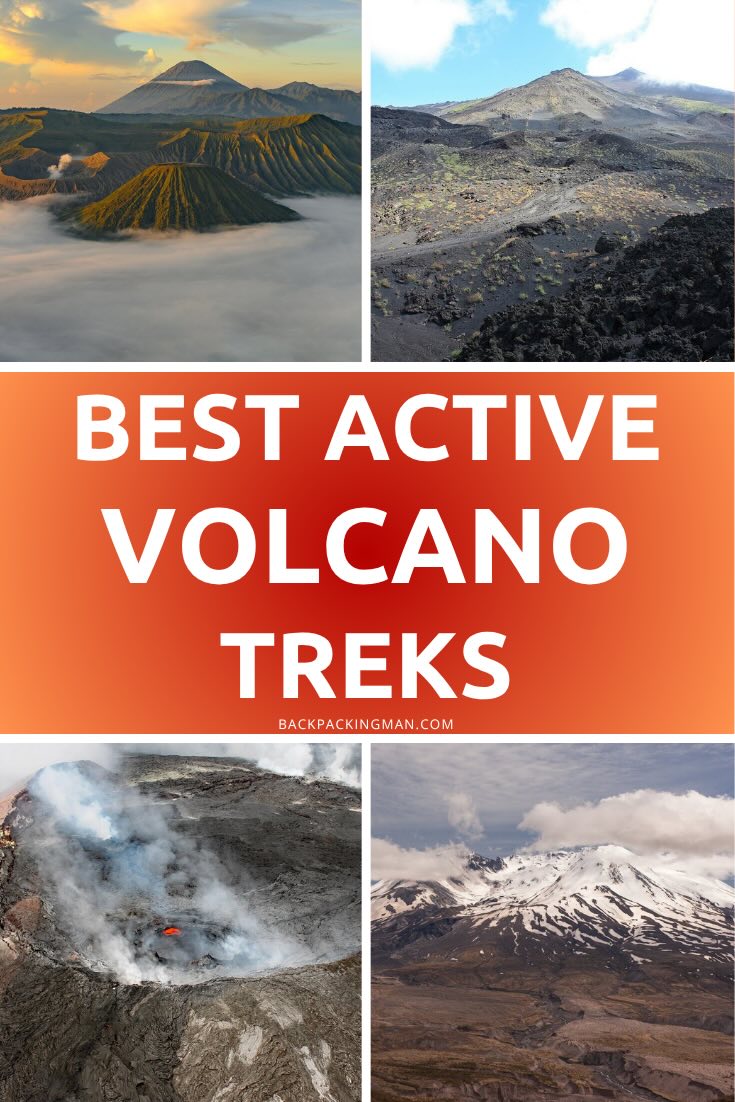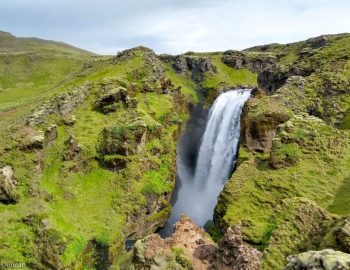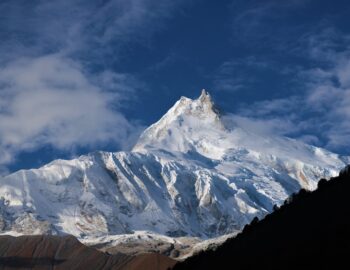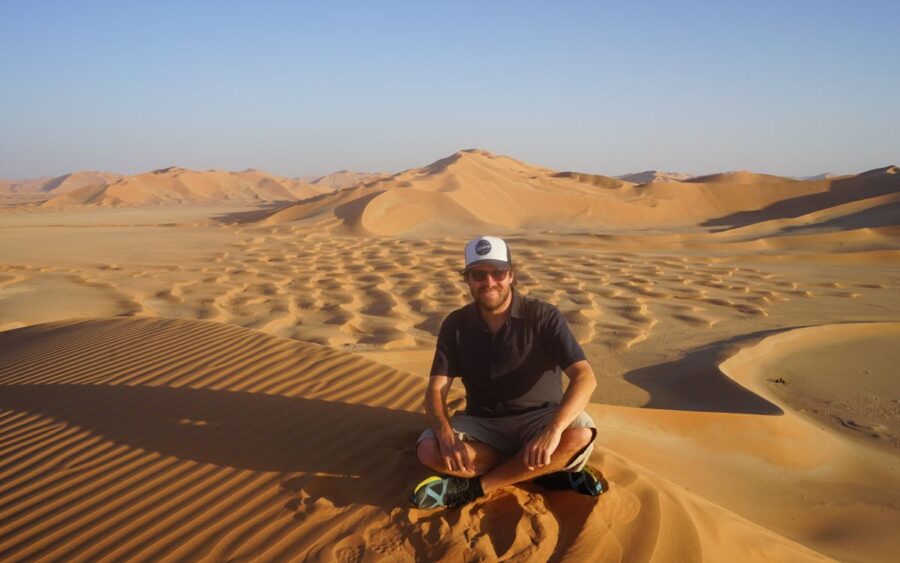Active-volcano treks deliver a heady mix of raw geology, dramatic landscapes, culture, and — when treated with respect — unforgettable memories. These are seven of the world’s best active-volcano treks, chosen for accessibility, spectacle, and the quality of the trekking experience. 🔥🥾
Volcano Treks
For each volcano, I’ll cover what to expect, how hard it is, when to go, key safety and permit notes, and a few practical tips so you can plan like a pro.
Naturally, there are plenty of active volcano treks in the world, but these are some of, not only the best, but also reasonably accessible. For example, one of my favourite active volcano treks was in the Danakil Depression in Ethiopia, but due to the security situation there and access, I have not included it.
Quick safety note: “Active” covers a wide range — from temperamental fumaroles to raging lava lakes. Conditions and access can change quickly. Always check the latest local advisories, hire a reputable guide where recommended, and respect exclusion zones.
1. Tongariro Alpine Crossing – New Zealand
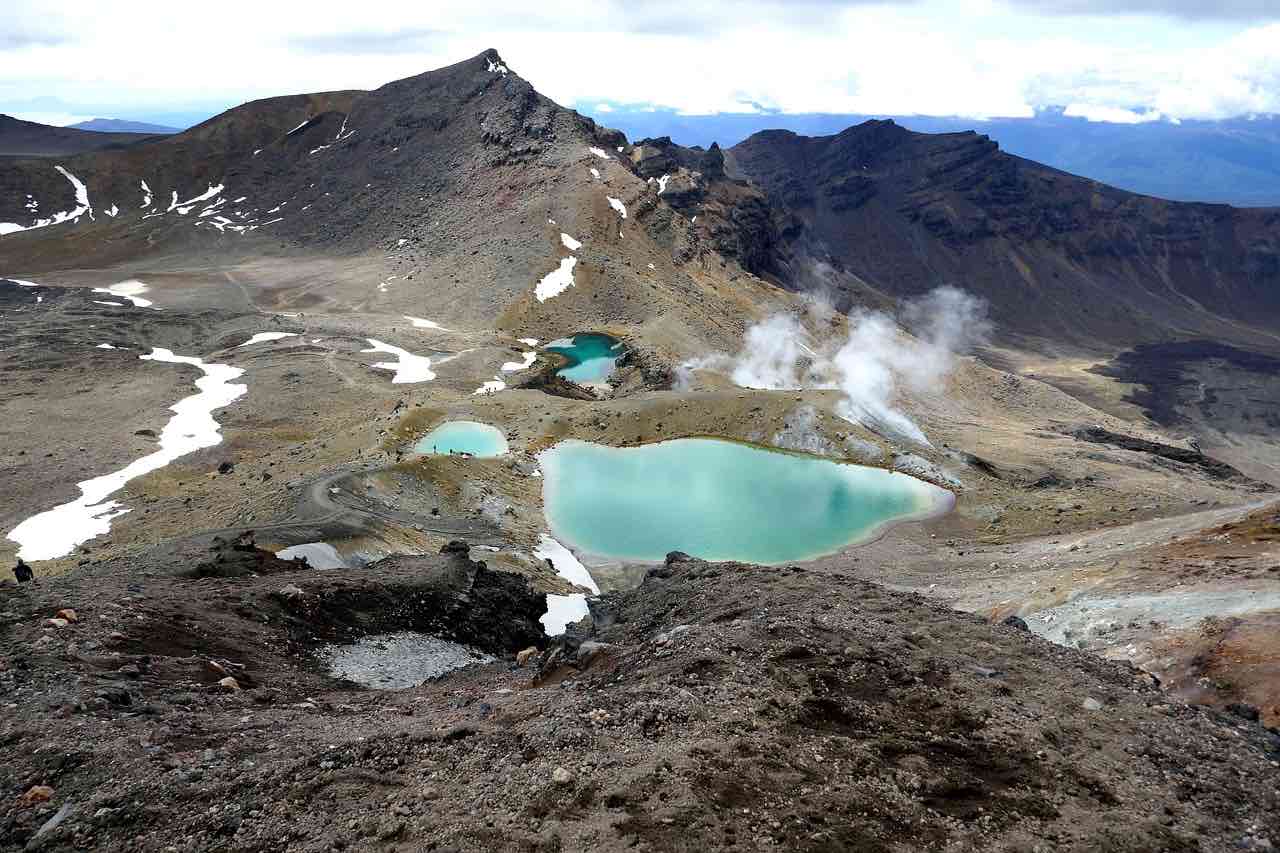
Why go: The Tongariro Alpine Crossing is often called New Zealand’s greatest day hike — and for good reason. Traversing an active volcanic plateau in the heart of Tongariro National Park, this route threads between the dramatic cones of Tongariro and Ngauruhoe (Mount Doom in The Lord of the Rings), offering an unforgettable mix of raw geology, alpine wilderness, and cultural significance to the Māori people.
What you’ll see and feel: Smouldering vents, surreal emerald lakes, sulfur-stained craters, and jagged lava flows form an otherworldly landscape that feels almost Martian. From the Red Crater summit — the high point of the crossing — the view stretches across the volcanic plateau to distant Lake Taupō. Expect wind, thin air, and a sense of awe as you move through terrain shaped by both myth and eruption.
Difficulty: Strenuous — a 19.4 km (12-mile) one-way traverse with steep climbs, exposed ridgelines, and long descents. Weather shifts quickly, and even summer hikers can face cold, gusty, or icy conditions. Strong fitness, layered clothing, and preparation are essential.
Best season: Late November through April, when the route is generally snow-free and shuttle services operate regularly. Winter crossings are possible only with alpine equipment and experience or a qualified guide.
Permits & guides: No permit is needed for the day hike itself, but parking restrictions and shuttle coordination apply. Guided trips are available for added safety, especially in winter. Respect cultural restrictions — summiting Mt. Ngauruhoe and Mt. Tongariro is tapu (sacred) and discouraged.
Practical tips:
- Start early to avoid crowds and finish before the afternoon weather turns.
- Carry at least 2–3 liters of water; there’s none on the route.
- Layer up — temperatures can swing dramatically.
- Book your return shuttle in advance and confirm trail conditions with the Department of Conservation (DOC) before heading out.
2. Mount Bromo — East Java, Indonesia
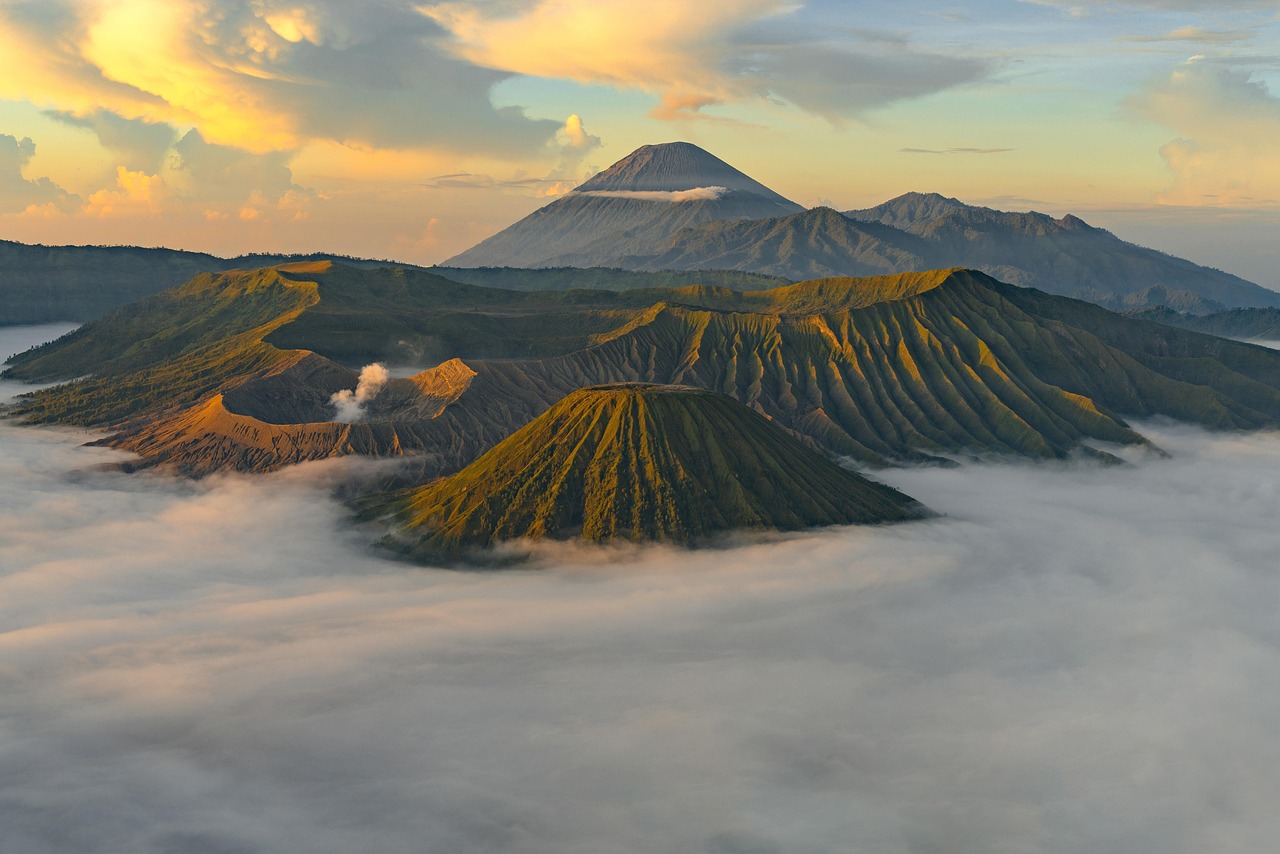
Why go: If cinematic landscapes and dramatic sunrise scenes are your thing, Bromo delivers. The active Tengger massif includes a wide sea of volcanic sand (the “Sea of Sand”) and the smoking crater of Bromo itself — a short, steep climb takes you to the lip where sulfur plumes often rise.
What you’ll see and feel: Ethereal sunrise over low clouds, the stark contrast of black sand and white fumaroles, and strong cultural flavor — the Tenggerese people hold an annual Yadnya Kasada ceremony at Bromo.
Difficulty: Easy to moderate. You can reach viewpoints by 4×4 and then walk a relatively short (but sometimes windy and dusty) path to the crater rim. Some visitors combine four-wheeling with a short trek; others prefer a sunrise hike from a nearby viewpoint.
Best season: April–September for clearer skies at sunrise; avoid the heavy monsoon months if you want predictable vistas.
Permits & guides: Park fees apply. Local guides and jeep operators are common for sunrise trips. Expect crowds at popular viewpoints; plan an early start.
Practical tips:
- Bring a cloth or mask — fine volcanic ash and sand can be blown around.
- Sunrise tours can be cold before dawn; dress in layers.
- Respect local customs and the Tenggerese community — don’t approach sacrificial sites during ceremonial times.
3. Cotopaxi — Ecuador
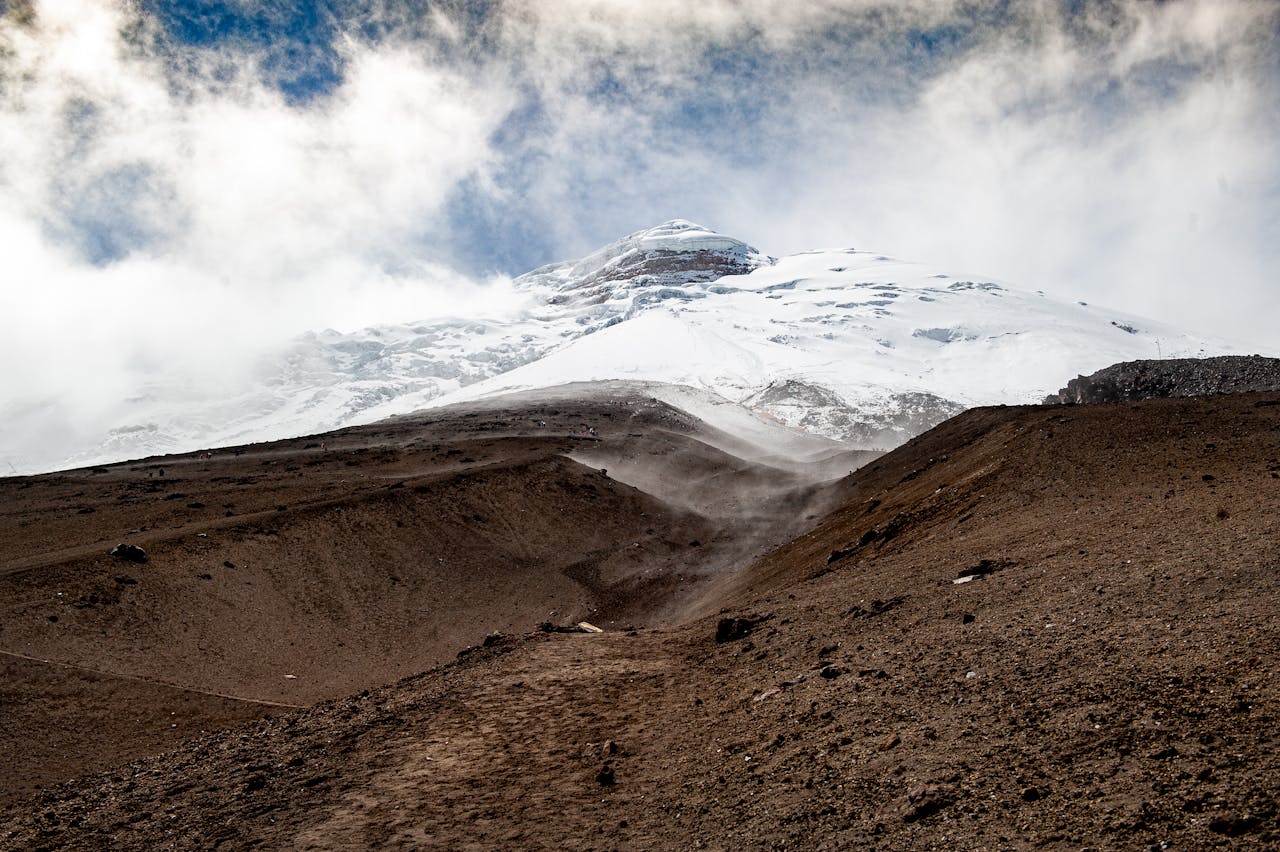
Why go: Cotopaxi is one of the world’s highest active volcanoes with a glacier-clad cone that’s instantly recognizable. Many trekkers combine acclimatization in Quito with a guided ascent of Cotopaxi’s high slopes for an alpine crampon-and-ice-axe experience.
What you’ll see and feel: Broad Andean panoramas, high-altitude puna grasslands, and — from higher camps — steep glacial slopes leading to a windswept summit with other Andean giants on the horizon. Expect thin air and brisk winds.
Difficulty: Challenging to very hard, depending on objectives. Reaching the true summit requires glacier travel skills and is a high-altitude mountaineering challenge (often 5,900+ meters in the region); many trekkers content themselves with day hikes to refuge huts or lower camps.
Best season: Dry season (June–September) offers more stable weather and clearer views, but high-altitude weather can be unpredictable year-round.
Permits & guides: Climbing above certain elevations requires a guide and national park fees. Use a reputable guiding company that provides acclimatization advice, technical gear, and emergency protocols.
Practical tips:
- Prioritize acclimatization — altitude sickness is a real threat.
- Bring or rent appropriate alpine gear (crampons, helmet, harness, ice axe) if attempting high slopes.
- Weather can change rapidly; be prepared to turn back if conditions deteriorate.
4. Kīlauea – Hawaii, United States
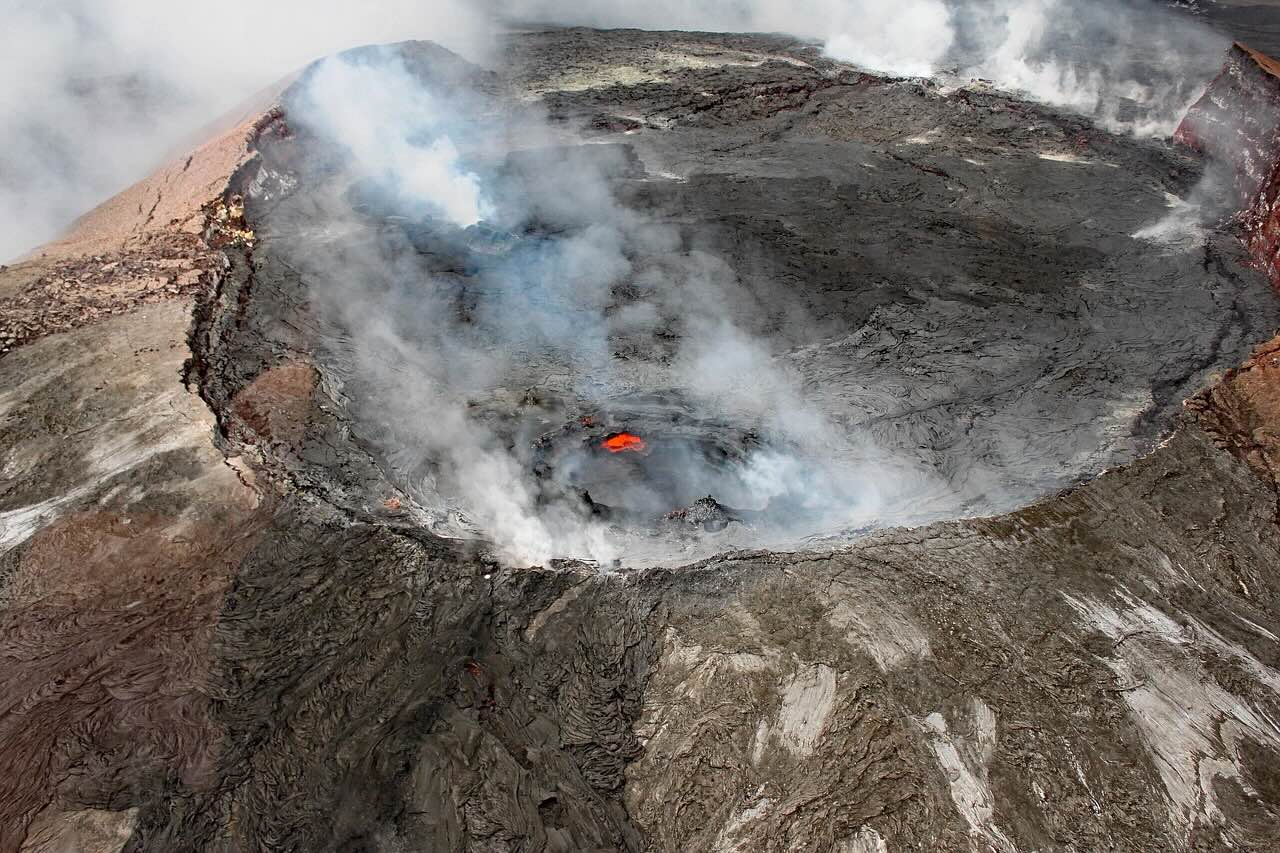
Why go: Kīlauea, one of the most active volcanoes on Earth, offers an otherworldly chance to witness the raw power of creation. Trekking here means walking through smoking craters, steaming vents, and fields of newly formed lava — a living reminder that the Hawaiian Islands are still being shaped.
What you’ll see and feel: Expect surreal contrasts — black lava deserts, glowing fissures after dark, lush rainforests reclaiming cooled flows, and vast calderas that seem to breathe. The air is often heavy with volcanic gases, and the distant rumble of earth movement adds to the sense of awe. At night, the red-orange glow from Halemaʻumaʻu Crater can feel almost primeval.
Difficulty: Moderate overall, but conditions can shift quickly. Trails vary from easy boardwalks and crater rim paths to rugged cross-lava routes that demand stamina, balance, and heat tolerance. Footing can be sharp and uneven, and humidity makes even short hikes taxing.
Best season: Year-round, though April to October is generally drier. Early morning or late afternoon treks avoid midday heat and offer the best light for photos. Weather at elevation can turn quickly — bring layers for wind and rain.
Permits & guides: Day hikes within Hawaiʻi Volcanoes National Park usually require no special permit, but certain off-trail or backcountry routes (like Mauna Iki or Nāpau Crater) do. Rangers and local guides can enhance the experience with current eruption updates and safety briefings.
Practical tips:
- Stay informed about volcanic activity — parts of the park can close with little notice.
- Bring sturdy boots with thick soles; lava rock can shred lightweight footwear.
- Carry plenty of water, sun protection, and a headlamp if you’re hiking near dusk.
- Respect all closures and warning signs — active lava is mesmerizing but dangerous.
5. Mount Etna — Sicily, Italy
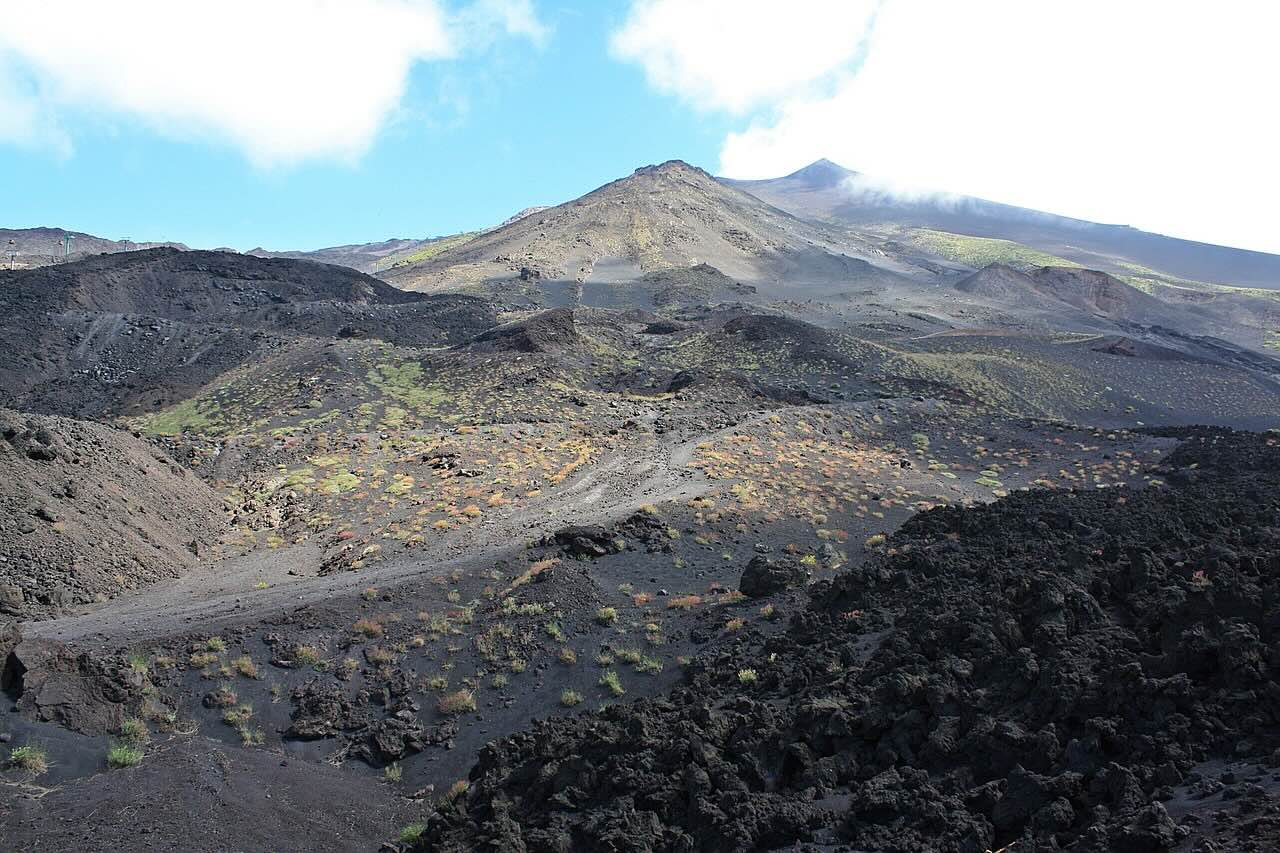
Why go: Mount Etna is Europe’s most active volcano and offers a wide variety of trekking experiences: easy walks across recent lava flows, challenging ridge treks, and night-time ascents to watch strobing fumaroles. Plus, you get Sicilian hospitality and wine at the trail’s end.
What you’ll see and feel: Black lava fields, lunar-like landscapes, steaming vents, and incredible views of the Mediterranean. Etna’s landscape changes frequently with eruptions; every trip may see something new.
Difficulty: Variable — from easy guided walks to serious multi-hour alpine hikes. Many operators run half-day and full-day guided treks. Some routes, like to the Silvestri craters or certain ridges, are accessible to most walkers; summit ascents and technical routes require guides, permits, and better fitness.
Best season: Year-round — in winter, there’s snow and options for ski-and-volcano combinations; late spring to early autumn is ideal for hiking.
Permits & guides: For summit areas and certain crater zones, Italian authorities require guides and may restrict access. Book with licensed guides who monitor volcanic activity and route openings.
Practical tips:
- Weather at altitude changes quickly — have layers.
- Boot traction matters on recent lava flows, where footing can be rough and sharp.
- Pair the trek with local food — Etna’s terroir produces unique wines and pistachios.
6. Pacaya — Guatemala
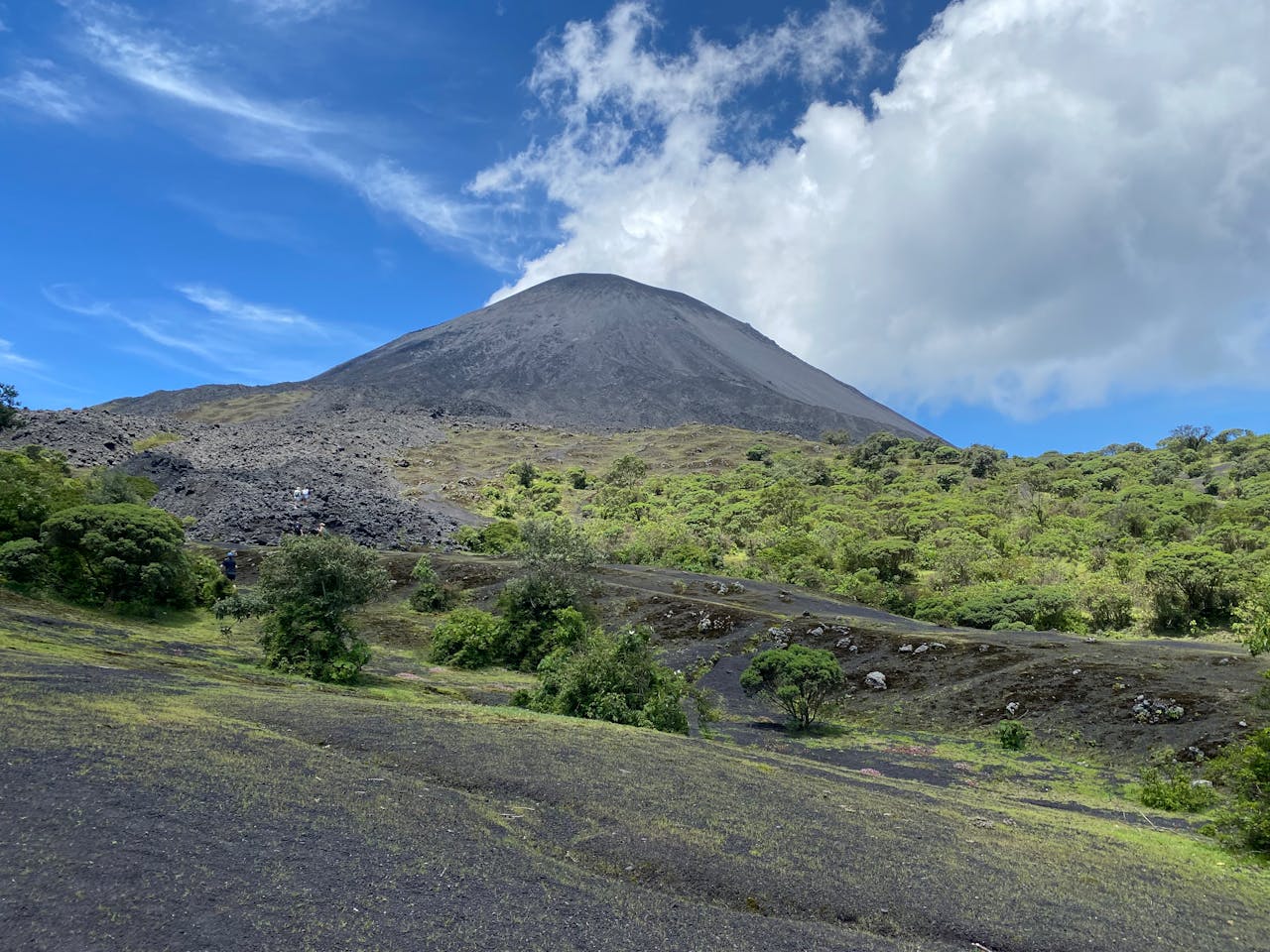
Why go: Pacaya is one of the most accessible active volcano treks, where you can get near lava flows (when activity is favorable) with relatively little technical climbing. Its accessibility and dramatic lava sessions make it a favorite for day-trippers from Antigua.
What you’ll see and feel: Rolling blackened slopes, fumaroles, and, during active phases, glowing lava flows that you can view from safe distances. The trail offers a lunar-like landscape and dramatic foregrounds for photos of nearby Agua and Fuego volcanoes.
Difficulty: Easy to moderate — many visitors do a 2–4 hour round-trip hike with a local guide. The last section can be steep and loose; if lava is present, you may hike across cooled lava fields.
Best season: Dry season (November–April) offers more predictable conditions. The weather can be cloudy in the afternoon; sunrise/early morning hikes avoid heat and clouds.
Permits & guides: Local guides are required and organized from Antigua; they know the current safe vantage points for observing lava and fumaroles. Park access fees and guide fees apply.
Practical tips:
- Wear sturdy boots — old lava is sharp.
- Don’t touch fresh lava or approach glowing flows; heat and gas are dangerous.
- Bring water, sunscreen, and a windproof layer; the weather can change quickly.
7. Mount St. Helens — Washington State, USA
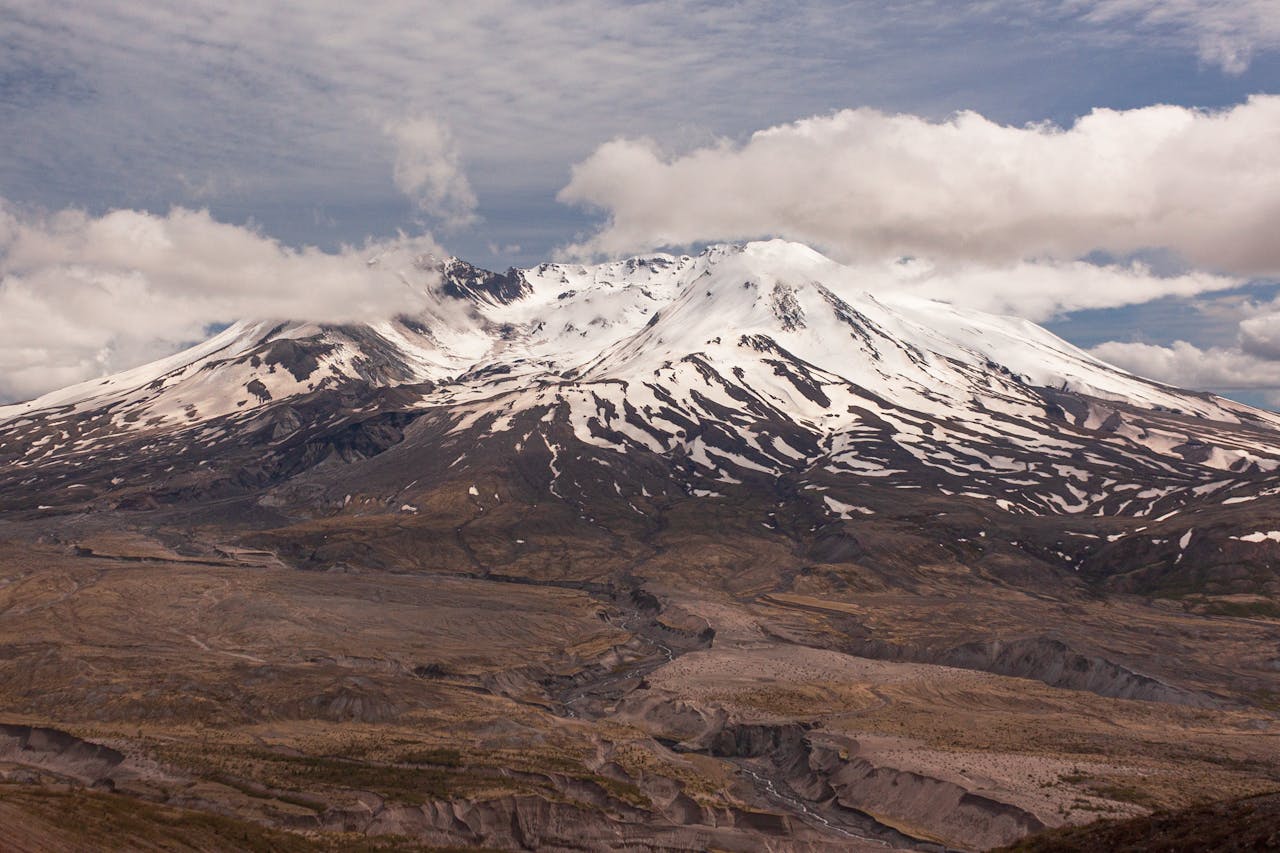
Why go: Since its dramatic 1980 eruption, Mount St. Helens has been a living laboratory of ecological recovery and offers dramatic hikes across a landscape transformed by volcanic force. Treks combine geological interpretation with challenging summits and expansive views.
What you’ll see and feel: Devastated and recovering forests, the pumice plain, Spirit Lake vistas, and the new lava dome visible from many vantage points. The summit more than makes up for the effort with sweeping panoramas across the Cascades.
Difficulty: Variable — options range from easy interpretive walks (e.g., Johnston Ridge Observatory area) to strenuous summit climbs that require route-finding and good fitness. The standard summit route is a long, exposed scramble with volcanic scree.
Best season: Late spring through early fall (June–October) for snow-free access; weather and road closures can affect timing.
Permits & guides: Day hikes typically don’t require guides, but summit attempts and backcountry camping may need permits. Check U.S. Forest Service and National Volcanic Monument advisories.
Practical tips:
- Visit the Johnston Ridge Observatory to get excellent context on the 1980 eruption before heading into the field.
- Pumice and ash make some trails unstable — trekking poles help.
- The region receives seasonal closures, so confirm road and trail status before leaving.
Choosing the Right Volcano Trek for You
Not all volcano treks are created equal. Think about these factors before you book:
- Risk tolerance: Nyiragongo and Etna can be dramatic; St. Helens and Bromo are generally lower-risk for international visitors. If you want lava but prefer lower risk, Pacaya (with guide-controlled vantage points) can be a good choice.
- Physical fitness and technical ability: Cotopaxi and Rinjani demand endurance and, for their high routes, mountaineering skills. Pacaya and Bromo are more walkable.
- Altitude sensitivity: Cotopaxi and Rinjani reach elevations where acclimatization and caution are necessary.
- Logistics: Accessibility from major hubs matters. Pacaya is a short trip from Antigua; Nyiragongo requires more planning and a stay in Goma plus security checks.
- Cultural bonus: Places like Bromo and Etna pair cultural richness with geological drama — great for travelers who want local flavor after the hike.
Practical Planning Checklist
- Research current activity: Check official volcano observatories, national park pages, and local operator advisories within days of travel.
- Hire reputable guides: For most active volcano treks (and required in many locations), use licensed operators with safety protocols and rescue plans.
- Get permits & park fees: Many parks enforce permits and limit numbers; secure these early.
- Health & fitness: Train for elevation gain and loose scree. Practice with long hikes and stair climbs; if using crampons, take a short skills session.
- Gear essentials: Sturdy boots, layers, windproof jacket, headlamp, sun protection, gloves, trekking poles, reusable water bottle, basic first-aid, and a charged phone with emergency contacts. For glaciated volcanoes: crampons, ice axe, helmet, harness (or rent through your guide).
- Safety kit: A Gas mask or filter is smart in sulfur-rich places; a personal locator or satellite device if trekking in remote regions.
- Insurance: Check that your travel insurance covers high-altitude trekking and evacuation (some policies exclude active-volcano climbs).
- Local respect: Observe exclusion zones and cultural customs. Many volcanic sites hold spiritual significance to local communities.
Environmental and Ethical Considerations
Volcano tourism can stress fragile environments. Keep these in mind:
- Leave no trace: Pack out trash. Avoid scuffing fragile vegetation or biological crusts on lower slopes.
- Support local economies: Hire local guides, buy from local restaurants and guesthouses, and tip fairly.
- Don’t collect rocks: Removing volcanic rocks, eggshell-like pumice, or cultural artifacts harms natural and cultural heritage.
- Follow ranger rules: Restrictions and closures exist for safety and conservation — they’re not suggestions.
Fire-Wise Wisdom
Active-volcano treks sit at the thrilling crossroads of adventure travel and natural science.
The seven treks each offer a different flavor of that experience: from the communal sunrise rituals at Bromo, to the alpine discipline of Cotopaxi, the accessible lava drama of Pacaya, the biological and geological wonder of St. Helens, the shifting landscapes of Etna, the remote lava-lake spectacle of Nyiragongo.
Volcano trekking will give you some of the most elemental — and lasting — travel memories you’ll ever make. 🔥🥾 I love volcano trekking and hope this article helped in choosing a great trek for yourself.
For more on volcanoes, have a look at my article about the best documentaries about volcanoes.
Share this article about the best active volcano treks:
